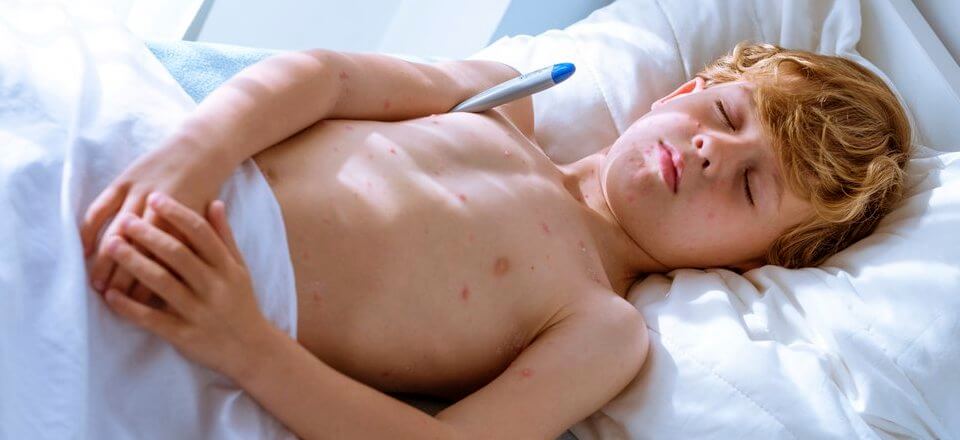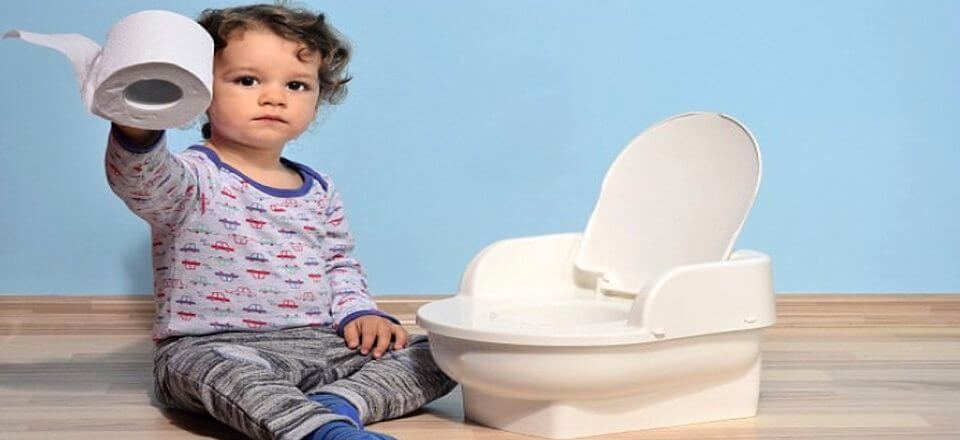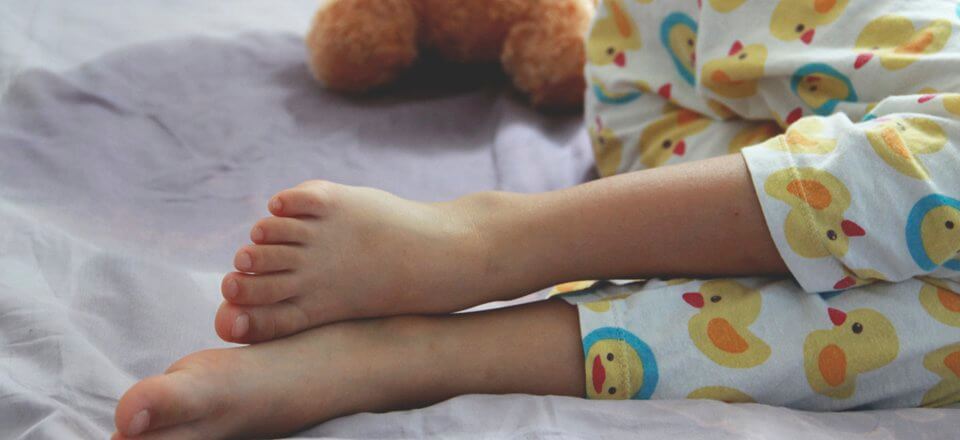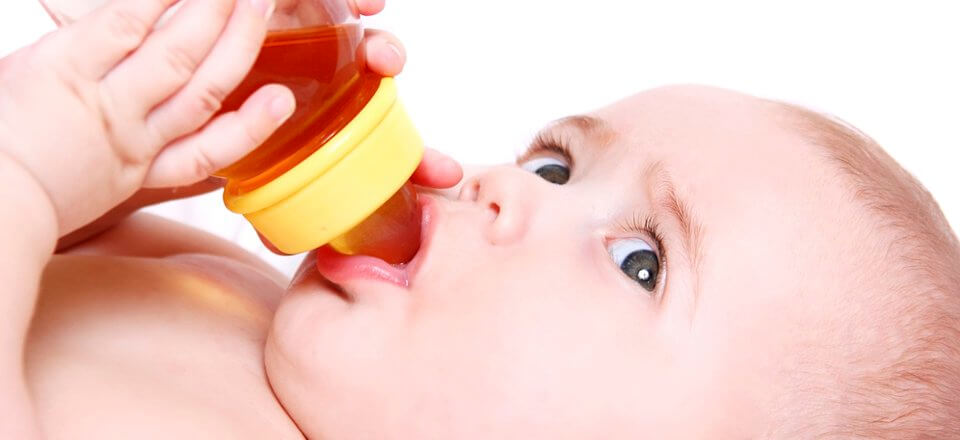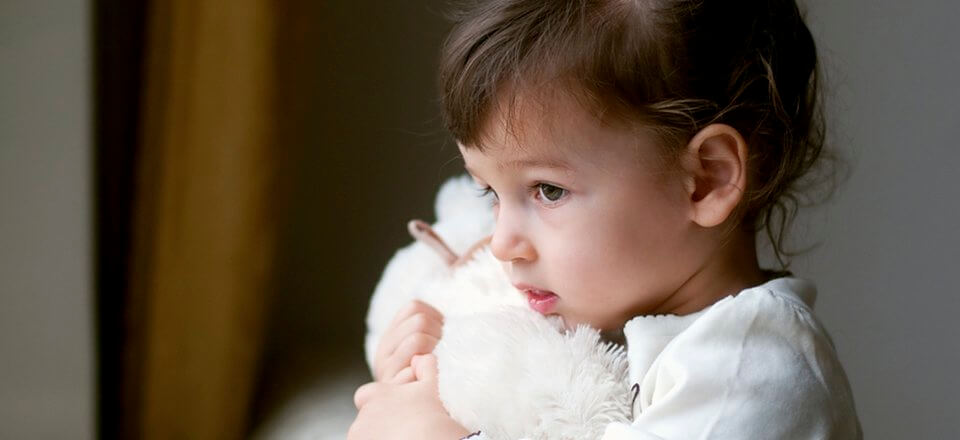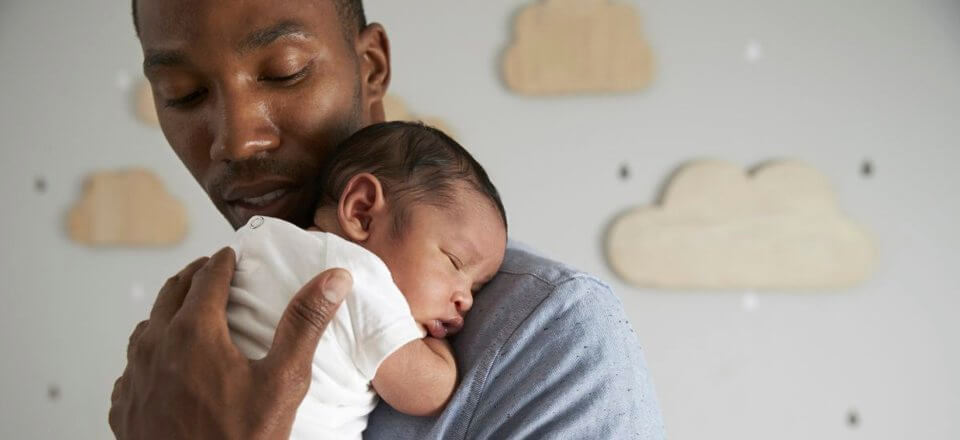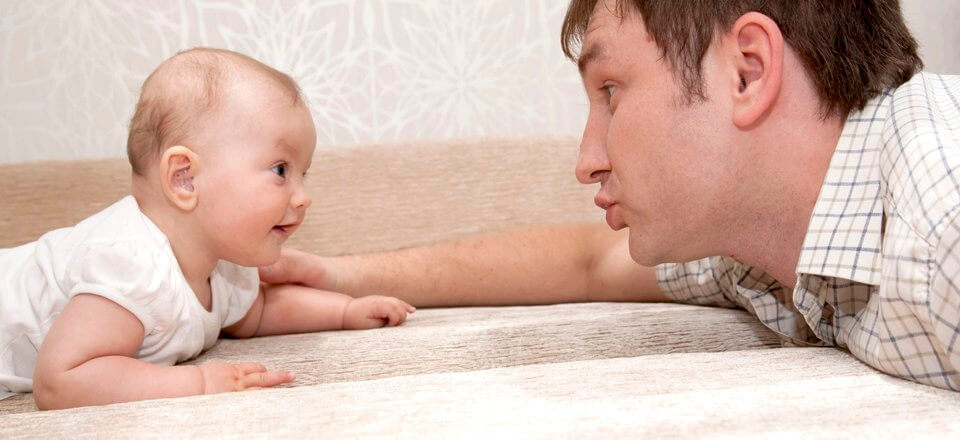Is Your One-Year Old Communicating With You?
“Dada.” “Mama.” “Ball.” What will your baby’s first words be?
Whatever the word is, when you hear it, it’s an exciting moment in your child’s language development.
However, language skills begin long before the first spoken word. Your child starts to communicate with you during the first year of life. Children respond to you and the world around them with eye gazes, smiles, gestures or sounds. Later on, you’ll notice more obvious “speech” skills or milestones.
Read more to learn about early language and social milestones and possible signs of language delay.
If you have any questions about your baby’s development, share them with your pediatrician–the sooner, the better.
Milestones
Remember, children develop at different rates, but they usually are able to do certain things at certain ages. The following developmental milestones are only guidelines.
By 12 months your baby should:
- Look for and be able to find the source of sounds.
- Respond to her/his name most of the time when you call it.
- Wave goodbye.
- Look where you point when you say, “Look at the ____________.”
- Change from monotone babble to babble with inflection, as if telling a story in a foreign language.
- Take turns “talking” with you–listens to you when you speak, and then resumes babbling when you stop.
- Say “dada” to dad and “mama” to mom.
- Say at least one or more words in addition to “mama” and “dada.”
- Point to items she/he wants that are out of reach or make sounds while pointing.
Between 15 and 24 months, your baby should:
- Follow simple commands with, and then later without, gestures.
- Get objects from another room when asked.
- Point to a few body parts when asked.
- Point to interesting objects or events to get you to look at them too.
- Bring things to you to “show you.”
- Point to objects so you will name them.
- Name a few common objects and pictures when asked.
- Enjoy pretending (for example, has a tea party). She/he will use gestures and words with you, or a favorite stuffed animal.
- Learn about 1 new word per week as she/he approaches her/his 2nd birthday.
By 24 months, your toddler should:
- Point to many body parts and common objects.
- Point to some pictures in books
- Follow 2-step commands.
- Say about 50 words or more.
- Say several 2-word phrases, like “daddy go,” “doll mine,” and “all gone.”
- May say a few 3-word sentences, like “I want juice” or “Me go bye-bye.”
- Be understood about 50% of the time.
About developmental language delay
Delays in language are the most common types of developmental delay. One in 5 children will show a developmental delay in the speech or language area. Some children will also show behavioral challenges because they are frustrated when they can’t express everyday needs, desires or interests.
Simple speech delays are sometimes temporary. They may resolve on their own, or with a little extra help from family. Sometimes formal speech therapy is needed.
It’s important to encourage your baby to “talk” to you with gestures and/or sounds before filling a need. In some cases, your baby will need more help from a trained professional.
Sometimes delays may be a warning sing of a more serious disorder that could include hearing loss, global developmental delays or autism. Delays also could be a sign of a possible learning problem you may not notice until the school years. It’s important to have your child evaluated if you are concerned about you child’s language development.
Not typical behaviors
Sometimes language delays are associated with behaviors that may concern you, like if your baby:
- Doesn’t cuddle like other babies.
- Doesn’t return a happy smile back at you.
- Doesn’t seem to notice if you are in the room.
- Doesn’t seem to notice certain noises (for example, seems to hear a car horn or a cat’s meow, but not when you call her/his name).
- Acts as if he is in his own world.
- Prefers to play alone; seems to “tune others out.”
- Doesn’t seem interested in or play with toys, but likes to play with objects in the house.
- Shows a strange attachment to hard objects (would rather carry around a flashlight or ballpoint pen than a stuffed animal or favorite blanket).
- Can say the ABCs, numbers or words to TV jingles, but can’t ask for things she/he wants.
- Doesn’t seem to have any fear.
- Doesn’t seem to feel pain.
- Laughs for no clear reason.
- Uses words or phrases that are inappropriate for the occasion.
If your child seems delayed or shows any of the above behaviors, tell you pediatrician. Also, tell your pediatrician if your baby stops talking or doing things that she/he used to do.
When autism is the reason for language delays, the child will also show some or all of the above-listed behaviors. Most likely, your child will then be referred to a specialist or a team of specialists knowledgeable about autism and its many related disorders. The specialist(s) may then recommend speech therapy, but also specific interventions to improve social skills, behavior and the “desire” to communicate.
What Your Pediatrician Might Do
After you share your concerns with your pediatrician, he or she may:
- Ask you some questions, or ask you to fill out a questionnaire.
- Evaluate certain aspects of your child’s development by interacting with your child in various ways.
- Order a hearing test and refer you to a speech and language therapist for testing. The therapist will evaluate your child’s speech (expressive language) and ability to understand speech and gestures (receptive language).
If your pediatrician doesn’t seem to be concerned and instead tries to reassure you that children develop at different rates and that your child will “catch up in time,” it’s OK to say you are still concerned. You might also ask you pediatrician if a referral to a developmental specialist might be appropriate.
If any of the steps above lead to the conclusion that expressive language ONLY is delayed, you may be given suggestions to help your child at home. Formal speech therapy may also be recommended.
If Both receptive and expressive language are delayed, and the hearing is normal, your child will need further evaluation. This will determine whether the delays are due to a true communication disorder, global developmental delays, autism or some other developmental problem.
Programs
Regardless of the cause of your child’s delays, your pediatrician may refer you to a local developmental or school program that provides intervention services to children with various delays. The staff there might do an independent evaluation. You may be reassured that your child’s development is, indeed, within normal limits, or the staff might feel that she/he would benefit from some type of intervention.
If your child is younger than 3 years, the referral may be to an Early Intervention Program (EIP) in your area. This is a federal- and state-funded program that helps children with delays or behavioral challenges. You may also contact the EIP directly.
If your child is eligible for services, a team of specialists will, with your input, develop an Individualized Family Service Plan (IFSP). This plan becomes a guide for the services that will be provided until your child turns 3 years of age. It may include parent training and support, direct therapy, respite, and special equipment. Other services may be offered if they benefit your child and/or your family. If your child needs help after 3 years of age, the EIP staff will refer your child to the local school district.
If your child is 3 years of age or older at the time of a concern, the referral may be to your local public school. You may also contact the local public school directly. If your child is eligible, the school district staff will, with your input, develop an Individualized Education Plan (IEP). This plan provides many of the same services as the IFSP, but the focus is different: school services are mainly for the child. The level of services may also be different. If your child continues to need special education and services, the IEP will be reviewed and revised from time to time. The IEP should be revised to meet your child’s changing needs as she/he grows older and develops new skills.
Resources
American Academy of Pediatrics
National Center of Medical Home Initiatives for Children with Special Needs
www.medicalhomeinfo.org
Remember
Your instincts as a parent should be followed. If you continue to have concerns about your child’s development, ask for a reevaluation or referral for more formal testing.
